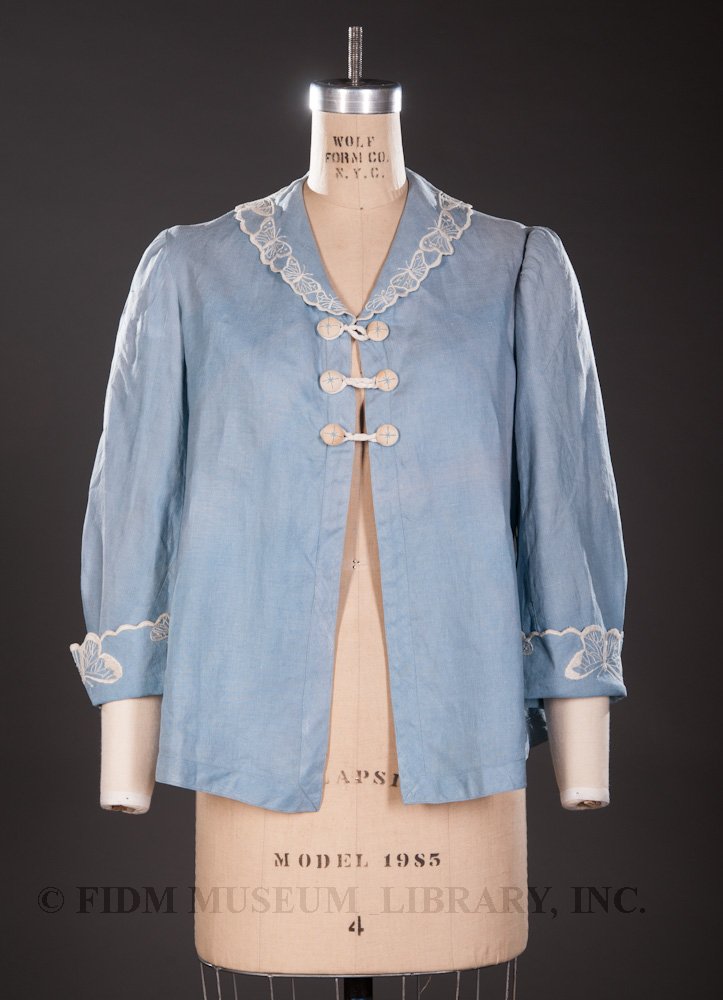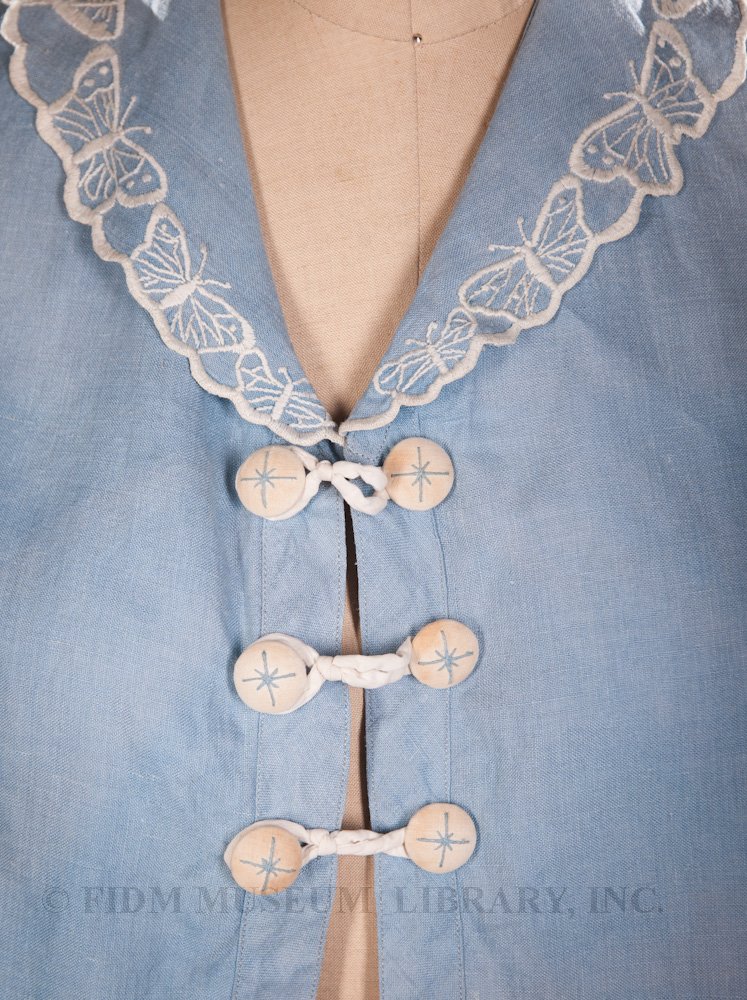 Linen jacket
Linen jacket
c. 1912
Gift of Wendy Cohen
2012.1186.2
Decorated with butterflies, this charming jacket was made sometime around 1912. During the 1910s, mainstream fashion moved away from the rigid S-bend silhouette of the Edwardian Era (1901-1910). Defined waistlines and full busts moved out of fashion, replaced by a leaner silhouette that de-emphasized bust and hip. By 1912, women's dress had softened, narrowed, and shortened. This new mood was reinforced by a increase in the popularity of softer textiles, including lightweight cottons (lawn, batiste) and a variety of lightweight silks (crepe, chiffon, satin). Linen, used to create the jacket pictured here, was also popular.
At the time this jacket was made, nearly all types of garments could be purchased ready-made. Though it has no label, this simple jacket was probably a creation of the emerging ready-to-wear industry. With a loose fit and relatively few pattern pieces, it would have been easy to create in a factory setting. The butterflies perched on cuff and collar are machine embroidered, though the starbursts decorating the fabric buttons may have been stitched by hand.
This jacket was probably worn at-home, as a dressing or morning jacket. Instead of donning full day dress immediately after waking, many women of leisure wore at-home ensembles for the first few hours of the day. Seen only by family and household servants, morning dishabille ranged from low-key (a plain muslin gown) to elaborate (a chiffon jacket worn over a loose silk sheath). In 1913, Vogue offered a suitably romantic option, a 3-piece ensemble of matching cap, coat, and skirt made of "primrose-yellow chiffon with a lining of flesh colored chiffon."1
1"Morning Coquetries" Vogue (May 1, 1913): 126.



